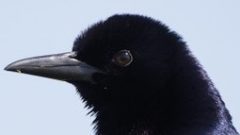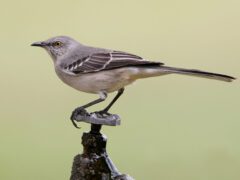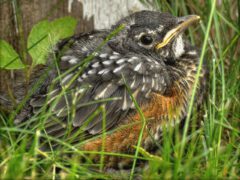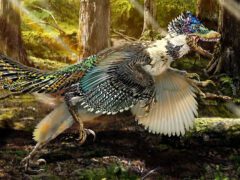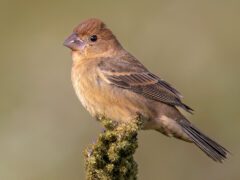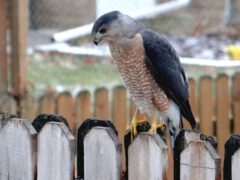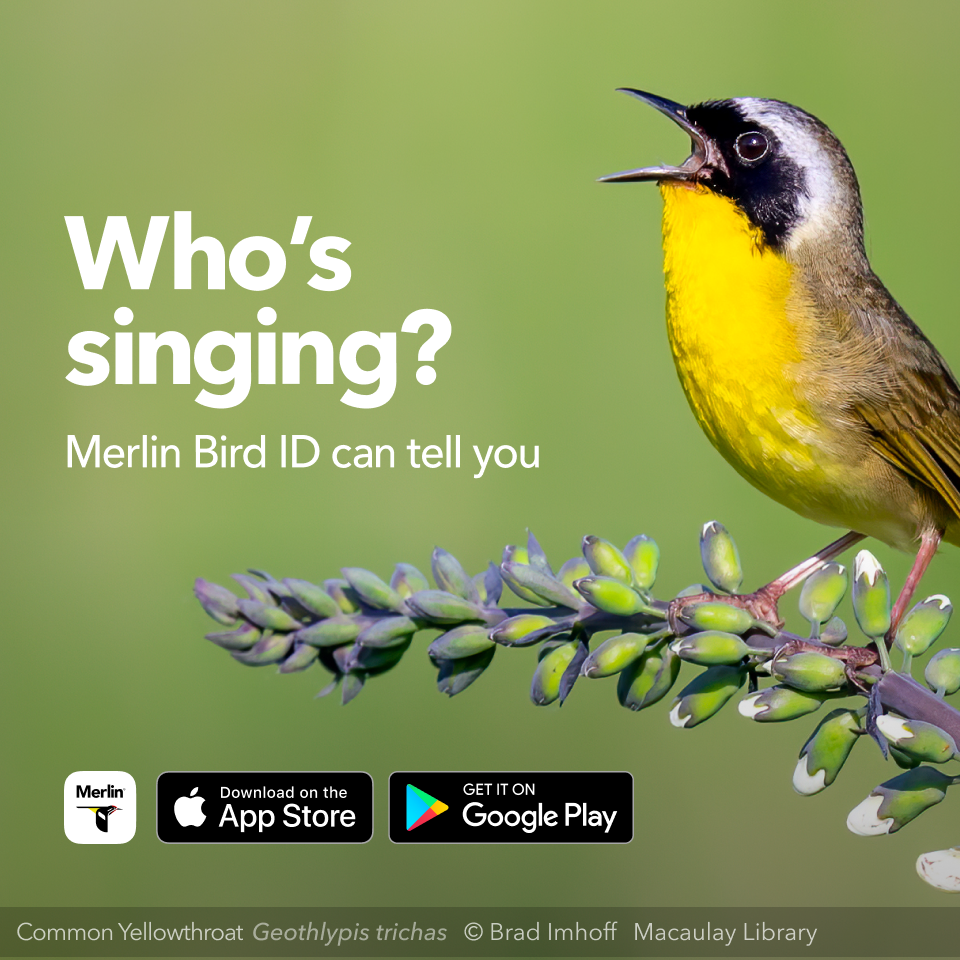Common Grackle Similar Species Comparison
Main SpeciesCommon Grackle
Juvenile
Comes to bird feeding stations, where it often feeds on seeds on the ground.
© Maxima Gomez-Palmer / Macaulay LibraryIllinois, July 15, 2020Adult male
Found in agricultural fields, feedlots, city parks, and suburban lawns. They’re also common in open habitats including woodland, forest edges, meadows, and marshes.
© Epi Shemming / Macaulay LibraryManitoba, May 13, 2017Adult male
Large, lanky blackbirds with long legs, a long tail, and a long and heavy bill. Adult males appear dark overall, but have an iridescent bluish head and bronzy body in good light.
© Jack & Holly Bartholmai / Macaulay LibraryWisconsin, April 06, 2018Female
Lanky blackbird with a long tail and heavy, long bill. Females are slightly less glossy than males.
© Evan Lipton / Macaulay LibraryMassachusetts, May 29, 2015Adult males
The typical song, made by both males and females, is a guttural squeak accompanied by high-pitched, clear whistles. It lasts just less than a second and is often described as sounding like a rusty gate. While singing, males puff up their body feathers and spread their tails.
© Sarah Dzielski / Macaulay LibraryLouisiana, March 27, 2016Adult male
Struts on long legs, pecking for food rather than scratching.
© Melissa James / Macaulay LibraryFlorida, February 16, 2019Adult male
Noisy and conspicuous blackbird with a long tail.
© Logan Parker / Macaulay LibraryMaine, April 27, 2017Female (Purple form)
Females of the purple form can be similarly colored to males, but note the shorter tail that lacks a paddle shape.
© Michael O'Brien / Macaulay LibraryNew Jersey, February 24, 2019Female (Bronze form)
Females can be very dark, notably those of the bronze form.
© Ida & Carlos Furtado / Macaulay LibraryOntario, June 08, 2020Juvenile
Lanky blackbird with a long tail and hefty bill. Immatures are brownish overall, with a dark eye, and less glossy than adults.
© Simon Boivin / Macaulay LibraryQuebec, August 08, 2017Juvenile
Comes to bird feeding stations, where it often feeds on seeds on the ground.
© Maxima Gomez-Palmer / Macaulay LibraryIllinois, July 15, 2020Adult male
Found in agricultural fields, feedlots, city parks, and suburban lawns. They’re also common in open habitats including woodland, forest edges, meadows, and marshes.
© Epi Shemming / Macaulay LibraryManitoba, May 13, 2017Adult male
Large, lanky blackbirds with long legs, a long tail, and a long and heavy bill. Adult males appear dark overall, but have an iridescent bluish head and bronzy body in good light.
© Jack & Holly Bartholmai / Macaulay LibraryWisconsin, April 06, 2018Female
Lanky blackbird with a long tail and heavy, long bill. Females are slightly less glossy than males.
© Evan Lipton / Macaulay LibraryMassachusetts, May 29, 2015Adult males
The typical song, made by both males and females, is a guttural squeak accompanied by high-pitched, clear whistles. It lasts just less than a second and is often described as sounding like a rusty gate. While singing, males puff up their body feathers and spread their tails.
© Sarah Dzielski / Macaulay LibraryLouisiana, March 27, 2016Adult male
Struts on long legs, pecking for food rather than scratching.
© Melissa James / Macaulay LibraryFlorida, February 16, 2019Adult male
Noisy and conspicuous blackbird with a long tail.
© Logan Parker / Macaulay LibraryMaine, April 27, 2017Female (Purple form)
Females of the purple form can be similarly colored to males, but note the shorter tail that lacks a paddle shape.
© Michael O'Brien / Macaulay LibraryNew Jersey, February 24, 2019Female (Bronze form)
Females can be very dark, notably those of the bronze form.
© Ida & Carlos Furtado / Macaulay LibraryOntario, June 08, 2020Juvenile
Lanky blackbird with a long tail and hefty bill. Immatures are brownish overall, with a dark eye, and less glossy than adults.
© Simon Boivin / Macaulay LibraryQuebec, August 08, 2017Juvenile
Comes to bird feeding stations, where it often feeds on seeds on the ground.
© Maxima Gomez-Palmer / Macaulay LibraryIllinois, July 15, 2020Adult male
Found in agricultural fields, feedlots, city parks, and suburban lawns. They’re also common in open habitats including woodland, forest edges, meadows, and marshes.
© Epi Shemming / Macaulay LibraryManitoba, May 13, 2017Similar SpeciesRusty Blackbird
Nonbreeding male
Nonbreeding male Rusty Blackbirds have rusty edged feathers unlike the larger Common Grackle, which does not have rusty coloring.
© Brian Sullivan / Macaulay LibraryCalifornia, October 28, 2013Similar SpeciesBrown-headed Cowbird
Adult male
Brown-headed Cowbirds are smaller with a shorter tail than Common Grackles. Adult males have a brown head whereas Common Grackles have a blueish head.
© Brian Sullivan / Macaulay LibraryCalifornia, March 17, 2008Similar SpeciesGreat-tailed Grackle
Adult male
Great-tailed Grackles are larger with longer, keeled tails than Common Grackles.
© Darren Clark / Macaulay LibraryTexas, April 11, 2016Similar SpeciesGreat-tailed Grackle
Female
Great-tailed Grackles are larger than Common Grackles. Females are paler brown on the head and breast than female Common Grackles, which are darker overall.
© Jamie Chavez / Macaulay LibraryCalifornia, February 19, 2017Similar SpeciesBoat-tailed Grackle
Adult male
Boat-tailed Grackles are larger with longer, keeled tails than Common Grackles.
© Marie Hosch / Macaulay LibraryFlorida, March 23, 2016Similar SpeciesBoat-tailed Grackle
Female
Female Boat-tailed Grackles are paler brown on the head and breast than female Common Grackles, which are darker overall.
© Patrick J. Blake / Macaulay LibraryFlorida, October 11, 2016Similar SpeciesBrewer's Blackbird
Adult male
Brewer's Blackbirds are smaller with a shorter tail than Common Grackles. Males tend to have a purplish sheen on the head while male Common Grackles have a blueish sheen on the head.
© Mark Ludwick / Macaulay LibraryOregon, January 15, 2017Similar SpeciesBrewer's Blackbird
Female
Brewer's Blackbirds are smaller with a shorter tail than Common Grackles. Females have duller brown heads than female Common Grackles with a dark eye, but beware some female Brewer's have a pale eye.
© Jeff Bleam / Macaulay LibraryCalifornia, May 19, 2017Similar SpeciesRusty Blackbird
Breeding male
Rusty Blackbirds are smaller than Common Grackles with a smaller bill and shorter tail.
© Daniel Jauvin / Macaulay LibraryQuebec, May 12, 2017Similar SpeciesRusty Blackbird
Nonbreeding male
Nonbreeding male Rusty Blackbirds have rusty edged feathers unlike the larger Common Grackle, which does not have rusty coloring.
© Brian Sullivan / Macaulay LibraryCalifornia, October 28, 2013Similar SpeciesBrown-headed Cowbird
Adult male
Brown-headed Cowbirds are smaller with a shorter tail than Common Grackles. Adult males have a brown head whereas Common Grackles have a blueish head.
© Brian Sullivan / Macaulay LibraryCalifornia, March 17, 2008Similar SpeciesGreat-tailed Grackle
Adult male
Great-tailed Grackles are larger with longer, keeled tails than Common Grackles.
© Darren Clark / Macaulay LibraryTexas, April 11, 2016Similar SpeciesGreat-tailed Grackle
Female
Great-tailed Grackles are larger than Common Grackles. Females are paler brown on the head and breast than female Common Grackles, which are darker overall.
© Jamie Chavez / Macaulay LibraryCalifornia, February 19, 2017Similar SpeciesBoat-tailed Grackle
Adult male
Boat-tailed Grackles are larger with longer, keeled tails than Common Grackles.
© Marie Hosch / Macaulay LibraryFlorida, March 23, 2016Similar SpeciesBoat-tailed Grackle
Female
Female Boat-tailed Grackles are paler brown on the head and breast than female Common Grackles, which are darker overall.
© Patrick J. Blake / Macaulay LibraryFlorida, October 11, 2016Similar SpeciesBrewer's Blackbird
Adult male
Brewer's Blackbirds are smaller with a shorter tail than Common Grackles. Males tend to have a purplish sheen on the head while male Common Grackles have a blueish sheen on the head.
© Mark Ludwick / Macaulay LibraryOregon, January 15, 2017Similar SpeciesBrewer's Blackbird
Female
Brewer's Blackbirds are smaller with a shorter tail than Common Grackles. Females have duller brown heads than female Common Grackles with a dark eye, but beware some female Brewer's have a pale eye.
© Jeff Bleam / Macaulay LibraryCalifornia, May 19, 2017Similar SpeciesRusty Blackbird
Breeding male
Rusty Blackbirds are smaller than Common Grackles with a smaller bill and shorter tail.
© Daniel Jauvin / Macaulay LibraryQuebec, May 12, 2017Similar SpeciesRusty Blackbird
Nonbreeding male
Nonbreeding male Rusty Blackbirds have rusty edged feathers unlike the larger Common Grackle, which does not have rusty coloring.
© Brian Sullivan / Macaulay LibraryCalifornia, October 28, 2013Similar SpeciesBrown-headed Cowbird
Adult male
Brown-headed Cowbirds are smaller with a shorter tail than Common Grackles. Adult males have a brown head whereas Common Grackles have a blueish head.
© Brian Sullivan / Macaulay LibraryCalifornia, March 17, 2008Compare with Similar Species
Click on an image to compare
Species in This Family
Troupials and Allies(Order: Passeriformes, Family: Icteridae)





















